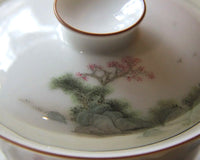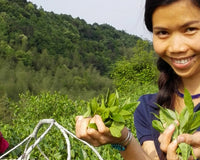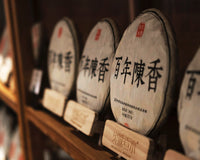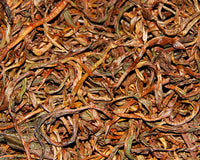Fujian Province is home to a rich diversity of tea cultivars.
What Is A Cultivar?
To understand the diversity of teas in Fujian, it is helpful to understand what the word 'cultivar' means. Sometimes the word 'varietal' is used in place of 'cultivar'. When the term 'varietal' is used in wine making it refers to the finished product and denotes that the wine has been produced from one variety of grapes, not blended with other grape varieties. To a degree, this may hold true for some teas; a farmer or processor may combine very similar cultivars in the creation of the finished tea.

'Cultivar; is short for 'cultivated variety'. When the term is used to describe teas, it can mean that a variety of tea has been developed by humans who have selectively bred different tea plants. It can also refer to varieties that developed in nature. Geographic isolation and other factors can contribute to the natural occurrence of distinct tea varieties.
Cultivars can be developed and grown for many reasons. Some produce more leaf. Others begin to sprout (i.e. "flush") earlier or later in the season. Some are more resilient to disease or climatic fluctuations.
One reason to understand cultivars is the impact they have on flavour, aroma and texture. When it comes to choosing more enjoyable teas, knowing the cultivar can help.
The major tea cultivars in Fujian Province are connected to a few key locations:
Fuding and Zhenghe
Fuding and Zhenghe are both known for their white teas cultivars. Of the two regions, it is believed that the Zhenghe Da Bai cultivar was derived from the older Fuding Da Bai cultivar.
The Da Bai tea plant produces large buds with silvery-white hairlike filaments. It is the shape and colour of these buds that give 'Silver Needle' teas their name. The same fuzzy, silver buds can be found in 'Bai Mu Dan'. The higher the quality of Bai Mu Dan, the more silver buds can be seen still attached to the leaf pairs beneath the bud.

The Wuyi Mountains

Several oolong cultivars have developed in the Wuyi mountainous area of Fujian. The terrain there has created several isolated pockets where new tea varieties were established. Of the many varieties grown in Wuyi, two make up a significant percentage of teas grown in the area - Rou Gui and Shui Xian.
The Rou Gui cultivar has been around for centuries, but has increased in popularity since winning several awards in the 1980s. It is known for its rich aroma, and its ability to steep multiple times. Our Rou Gui tea grows in the Zheng Yan, which is the official/genuine cliff areas of the Wuyi mountains.
Other, more recent oolong cultivars have been developed. Wan Ling Tea House's 'Jin Yao Shi', or 'Golden Key', is known to have a balanced complexity of initial sweetness with astringency, and a silky finish. Jin Yao Shi will no doubt take its place among the exceptional Wuyi cultivars.
The Wuyi mountains also produce a famous black tea called Lapsang Souchong, which is otherwise known as 'Zheng Shan Xiao Zhong'.
The cultivar and methods used for producing Lapsang Souchong were developed in Tong Mu, a small village in the Wuyi mountains. The original cultivar used for lapsang souchong is genetically similar to other Wuyi rock tea cultivars.
In fact, these other Wuyi cultivars have been harvested and used to create 'fake' Lapsang Souchong. The combination of authentic cultivar and distinct processing methods of authentic Lapsang Souchong create a unique tea found nowhere else.
Anxi
Tie Guan Yin is by far the most famous Fujian oolong cultivar. While other retailers may offer other cultivars processed to taste like Tie Guan Yin and sold under that name, Wan Ling Tea House only sells authentic Tie Guan Yin which comes from the Tie Guan Yin cultivar. Authentic Tie Guan Yin cultivars result in authentic Tie Guan Yin taste and character. Compromising on cultivar can mean drinking a Tie Guan Yin style tea with poorer aroma and inferior character.












